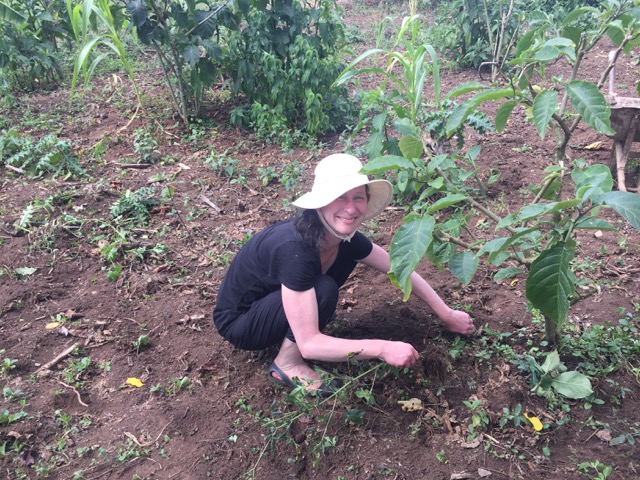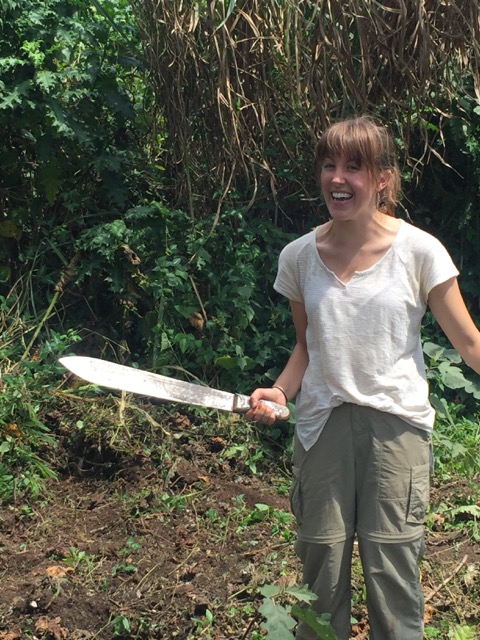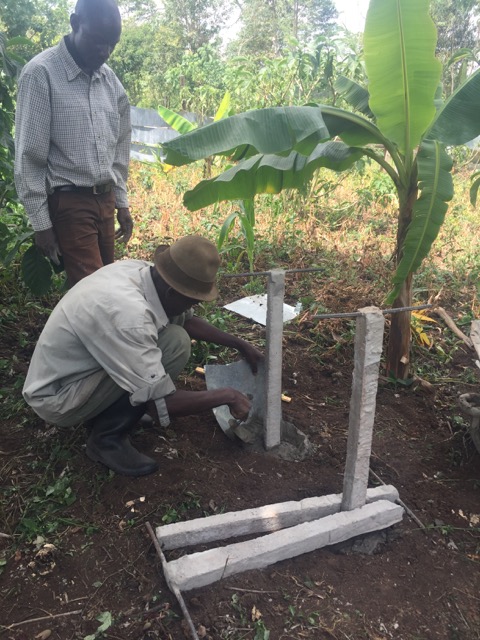I am back in rural western Uganda, just outside the boundaries of Kibale National Park. I travel here for several weeks each summer to volunteer with the Kasiisi Project (www.kasiisiproject.org). The Kasiisi Project, among other things, provides conservation and health education in 15 public primary schools. The Kasiisi Project also runs its own small farm. We have introduced and modeled sustainable farming practices, and hope to eventually raise some income for our programs. On my latest adventure, I helped update an apiary and build infrastructure for local honey production.
The Honey Project

Four years ago, Kasiisi introduced bees onto the farm to enrich its ecosystem. Eventually our apiaries will produce honey that we can sell to support the farm and our programs. Ugandans have treasured honey for generations for culinary and medicinal uses.
Many farmers throughout Uganda are also beekeepers. In recent years cooperative beekeeping and honey processing projects have benefited rural farming communities. It is an environmentally sound, non-labor intensive source of supplemental income.
In this part of the world, bees serve a surprising second function as much needed elephant deterrents. Elephant populations in many parts of Uganda have been thriving. While this is wonderful, it leads to devastating crop-raiding. Fortunately, elephants happen to be terrified of bees (look it up - it’s amazing!) . Communities have experimented - to documented success - with using “bee fences.” These strategically placed beehives keep elephants away from human crops.
Where I Come In
As honey buyer for Formaggio Kitchen South End, an amateur beekeeper, and a conservation enthusiast, this is where I come in. For the past several summers, I have helped to get Kasiisi’s apiary up and running. I arrange beekeeping training for our farm staff, and work towards the goal of processing honey. This year, I returned with a Beekeeping Intern. Scout Leonard is a rising senior at Harvard University who came to participate in an advanced beekeeping/apiary management training. She used what she learned from the training to improve our apiary productivity. Scout also collaborated with our Conservation Education Team to conduct bee talks at several of our schools. She introduced students to bees, beekeeping, and elephant fences, and set up beehives at the schools.
The Old Apiary

On the way to the apiary, we waded through patches of ankle-high grass interspersed with rows of eggplant and maize. There were patches of moonflowers and even a small family of goats. The farm is flush with forage for the bees, but they haven’t been happy or as productive as they should be. When we reach the apiary, we understand why. The cooling breezes that sweep across the farm rattle the apiary's metal fence. The fence is supposed to protect the bees inside and the people and farm animals outside. However, it traps the intense heat of the equatorial sun. Completely unprotected by trees, the temperature inside the cloistered apiary was 10 to 20 degrees higher than outside.
Bees try to maintain the internal temperature of their hives at about human body temperature, regardless of the external temperature. With our apiary completely exposed, our bees struggled constantly to keep their hives cool during the day and warm at other times. All this energy expended in heating and cooling is energy the bees cannot spend gathering nectar and pollen or making honey.
Keeping Up with the Hives

Our beekeeper, known to everyone as Mzee Amooti (“Mzee” is a term of respect for an older gentleman; Amooti is his Empaako, or pet name*), has kept bees for most of his life. He has always followed traditional practices, including basket-style hives that he dismantles at the end of each season to harvest the honey. He is still learning to care for bees housed in wooden Kenya Top Bar hives. Unlike the basket hives, these hives can maintain colonies through many seasons, as honey can be harvested while leaving the colony intact. Due to the learning curve, the farm staff hadn't been able to consistently schedule observations and hive checks. Regular checks would allow them to manage invasive pests and to evaluate the health and happiness of the colonies.
Standing in the apiary, our beekeeping trainer Daniel speaks first in Rutooro, the local language, and then in English, for me and Scout. His advice is forceful and direct: move the apiary to a site with more shade, yesterday, and implement a regular schedule of apiary walks and hive checks, now.
The New Apiary
We leave the apiary, Mzee and Daniel in the lead, forging a path through somewhat higher brush. We immediately feel the temperature drop: just a few meters from the apiary was an area protected from sun by some young, but growing trees. The next day, we return with pangas (Swahili for “machete”) and wheelbarrows filled with a mixture of concrete and sand (to extend the concrete). While some of us clear underbrush from the new site, others begin digging holes with the pangas. They insert concrete posts that will support the beehives, and fill them with concrete to lock them in place.
Once the posts have begun to set in the concrete, we form little concrete cups around the base of the posts. When filled with oil, these will drown any ants who try to invade our hives! Several days later, we begin moving the colonized hives to the new apiary site. We move just a few at a time, to give all of the bees a chance to acclimate. We don't want to upset all of the colonies at once.
'No Honey, No Money'
Implementing a schedule for apiary observations and regular hive checks is the next challenge. As Daniel repeatedly reminds us, “No honey, no money.” The only way to guarantee stable honey production is to keep up with your bees. You need to know which colonies are thriving; to catch pests before they become real threats; to keep a finger on the pulse of each hive and the apiary as a whole. Scout and I come up with a plan for bi-weekly apiary walks and a rotating schedule for opening hives. Our goal is to examine each hive at least once a month. We sit down with Ezra, the farm manager, to share the plan. He asks for a written record book, with instructions in Rutooro and English, so that he and Mzee can track hive conditions.
The Next Steps
With happier, more doted-upon bees, in a less extreme environment, we anticipate a strong honey harvest. We now prepare for the next stage - honey processing. Daniel will return to assist with the harvest at the end of August. He will bring with him the sealable buckets and several different sheets of increasingly fine cloth. We will use this to strain pollen, wax, and other particulate from our honey. We will do this until it reaches a smooth, silky viscosity, ready to be sold at local markets.
In addition to processing our own honey, we hope to create a market for the honey of other local beekeepers. We'll offer to purchase unprocessed honey that we would process, package, and sell. In line with our mission of conservation education, we work with several community beekeeping programs. We hope to begin to encourage beekeeping on a broader scale among our neighbors, many of whom also struggle with elephants.
So, you may ask, when will we see Ugandan honey on Formaggio Kitchen shelves? That is still a distant possibility - but I will keep you posted!
*Empaako is a naming system unique to several kingdoms in western Uganda. Each individual receives one of twelve “pet names” in addition to his/her first and family names. The United Nations has recognized and designated empaako as a form of Intangible Cultural Heritage.
Author Marianne Staniunas is a Cheesemonger and Honey Buyer for Formaggio Kitchen South End.

